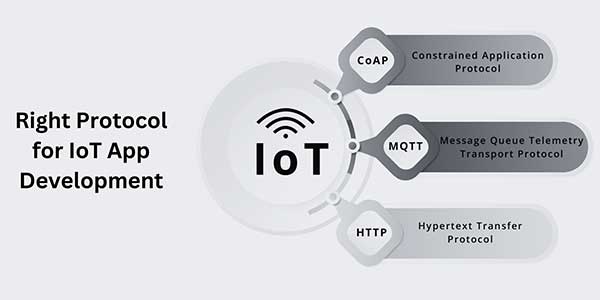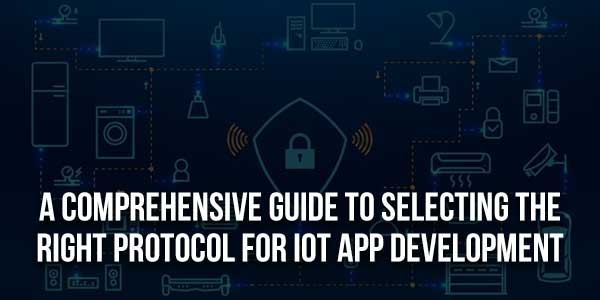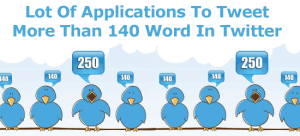
The Internet of Things, or IoT, is becoming necessary for modern living. Users can use the newest technology to increase the efficiency of their homes, lives, and enterprises with networked gadgets and sensors. The Internet of Things makes it possible to create intelligent, networked systems that can sense, gather, and exchange data in real time by tying together various devices and systems via the Internet. Approximately 20 billion gadgets are thought to be connected worldwide at the moment, according to data that IoT analytics has made accessible. This connectivity supports a roughly $150 billion industry. According to estimates, over 30 billion IoT devices will be in use by 2030, which could increase the industry’s worth to $1 trillion. This shows the importance and the demand of IoT app development, this blog will help you understand the IoT protocols and how to select them for IoT app development
Table of Contents
What Are IoT Protocols?
Before we begin choosing the best protocol, let us establish a solid understanding of what IoT protocols are and their critical function in the interconnected world of IoT. IoT protocols define the rules and standards devices must follow to interact efficiently. These protocols allow seamless data sharing, essential in any thriving IoT environment.
Protocols are standards for exchanging data between electronic devices that adhere to a prior agreement regarding data structure and how each side will send and receive data. In contrast, IoT protocols enable data interchange and transmission between the Internet and edge devices.
There are two sorts of IoT protocols: network protocols and data protocols. Data protocols are focused on information sharing, whereas network protocols are focused on connecting IoT edge devices to other edge devices or the Internet. There are numerous protocols in each category, each with its own set of characteristics.
Common IoT Protocols:
| IoT Network Protocols | IoT Data Protocols |
| Wi-Fi | AMQP |
| LTE CAT 1 | MQTT |
| LTE CAT M1 | HTTP |
| NB- IoT | CoAP |
| ZigBee | DDS |
| LoRaWan | LwM2M |
IoT Network Protocols
Wi-Fi:
Wi-Fi is a wireless networking technology that is widely used in homes and companies. It allows devices to connect to the internet and communicate with one another within a local area network (LAN). It offers high data transfer speeds across short to medium distances and operates on multiple frequency bands.
LTE CAT 1:
Within the LTE (Long-Term Evolution) family of technologies is this low-power, wide-area cellular network. LTE CAT 1 is an affordable alternative for applications that don’t require large capacity because it provides modest data speeds appropriate for Internet of Things devices.
LTE CAT M1:
Another LTE member designed specifically for Internet of Things devices is CAT M1. It provides better coverage and deeper penetration into buildings than standard LTE. CAT M1 uses less energy and extends the battery life of Internet of Things devices since it operates at a lower frequency.
NB- IoT:
This low-power wide-area network technology utilizes licensed cellular channels to enable effective IoT device connectivity. Because NB-IoT is built for circumstances requiring brief bursts of data transfer, it is well suited for smart meters, environmental monitoring, and asset tracking.
ZigBee:
Zigbee is a wireless protocol for low-power, low-data-rate applications, particularly in industrial IoT and smart home products. It uses a mesh network topology and runs on the IEEE 802.15.4 standard, allowing devices to build networks and communicate across relatively small distances.
LoRaWan:
LoRaWAN is a low-power, long-range wireless technology designed for Internet of Things applications. It can be used for remote monitoring, smart cities, and smart agricultural applications where devices must convey little amounts of data over long distances. It uses unlicensed radio frequency bands to operate.
IoT Data Protocols:
AMQP:
A dependable, asynchronous communications system called AMQP is intended to facilitate communication between devices or apps. It focuses on message orientation, enabling dependable delivery and security while enabling message interchange across many platforms and languages.
MQTT:
MQTT is a brief publish-subscribe messaging protocol that works well in networks with high latency, low bandwidth, or unstable situations, as well as on devices with limited resources. Its client-server architecture enables effective communication by allowing messages to be broadcast to subjects and received by a large number of subscribers.
HTTP:
HTTP is a widely utilized protocol for data exchange between web servers and clients, despite not being explicitly designed for IoT. Because of its request-response model, which enables device communication over the internet, it is appropriate for Internet of Things applications that need to be compatible with current web technologies.
CoAP:
A customized protocol called CoAP was created for Internet of Things devices that have limited resources, such memory or power. With modifications for usage in low-power, low-bandwidth networks, it functions similarly to HTTP.
DDS:
Designed for real-time and mission-critical systems, DDS is a publish-subscribe communication protocol that is focused on data. It makes data sharing between devices in dispersed contexts more effective, scalable, and safe. This is why it is frequently utilized in industries like industrial automation, aerospace, and healthcare.
LwM2M:
The need for remote device management and communication in Internet of Things installations led to the creation of the LwM2M protocol. By providing a standardized channel of communication between Internet of Things devices and management platforms, it makes features like tracking, customization, and firmware upgrades possible. IoT app development services ensure you select the right protocol for your business.

Key Protocol Considerations:
Security:
IoT applications prioritize security, particularly when handling sensitive data. Examine the protocol’s authentication procedures, encryption techniques, and security aspects to protect your Internet of Things ecosystem from possible breaches.
Scalability:
Evaluate the protocol’s scalability to allow the expansion of your IoT network. Consider the protocol’s capacity to accommodate increased connected devices without impacting performance.
Power Consumption:
Power efficiency is essential for extended battery life in Internet of Things devices. Select a protocol that reduces power consumption while preserving effective communication to guarantee long-term device functionality.
Data Transfer Rate:
Determine the necessary data transfer rate based on your IoT application type. While some apps can function with slower data transfer speeds, others require real-time connectivity. Choose a protocol based on what works best for you.
Interoperability:
Think about how well the protocol works with the current devices and systems. Your IoT ecosystem is more adaptable and versatile when compatible with various platforms and devices.
Latency:
Latency becomes a significant component in applications where real-time responsiveness is essential. Examine the protocol’s latency characteristics to ensure it satisfies your IoT solution’s performance requirements.
Cost:
Determine how much it will cost to adopt a specific protocol overall. It is advisable to consider the setup fees, license fees, continuing maintenance charges, and any other unanticipated expenditures related to the chosen protocol.
An Overview of IoT Architectures:
The three-layer design is one of the most basic and oldest IoT topologies. This includes the following layers:
Perception Layer:
This is the layer where all of the “action” takes place. Devices such as sensors (which detect temperature or light) and actuators (which conduct actions like turning on a light) can be found here. These devices gather information from their surroundings and transmit it to others.
Network Layer:
In the position of sending the information gathered by the perception layer. It involves all the infrastructures and protocols required, including cloud computing, gateways, and routers, to guarantee that data travels safely from devices to servers and back.
Application Layer:
The user and the IoT system communicate here. This layer offers services, including device administration, data analytics, and user interfaces based on the processed device data.
Conclusion:
When you take into account variables like cost, latency, data transfer rate, interoperability, security, scalability, and power consumption, you enable yourself to make decisions that are in line with your strategic goals. As you set out on this adventure, keep in mind that a strong and future-proof IoT application is built on the proper protocols, which will help you achieve your goal of being an industry leader.
In the world of IoT, where creativity has no boundaries, the protocol you choose can be the key to a game-changing outcome. Make informed decisions to ensure the success of your IoT ecosystem in the connected future. It would be better if you collaborate with a reliable organization offering app development services that can help you choosing the right protocol for your business.

 About the Author:
About the Author:












Be the first to write a comment.